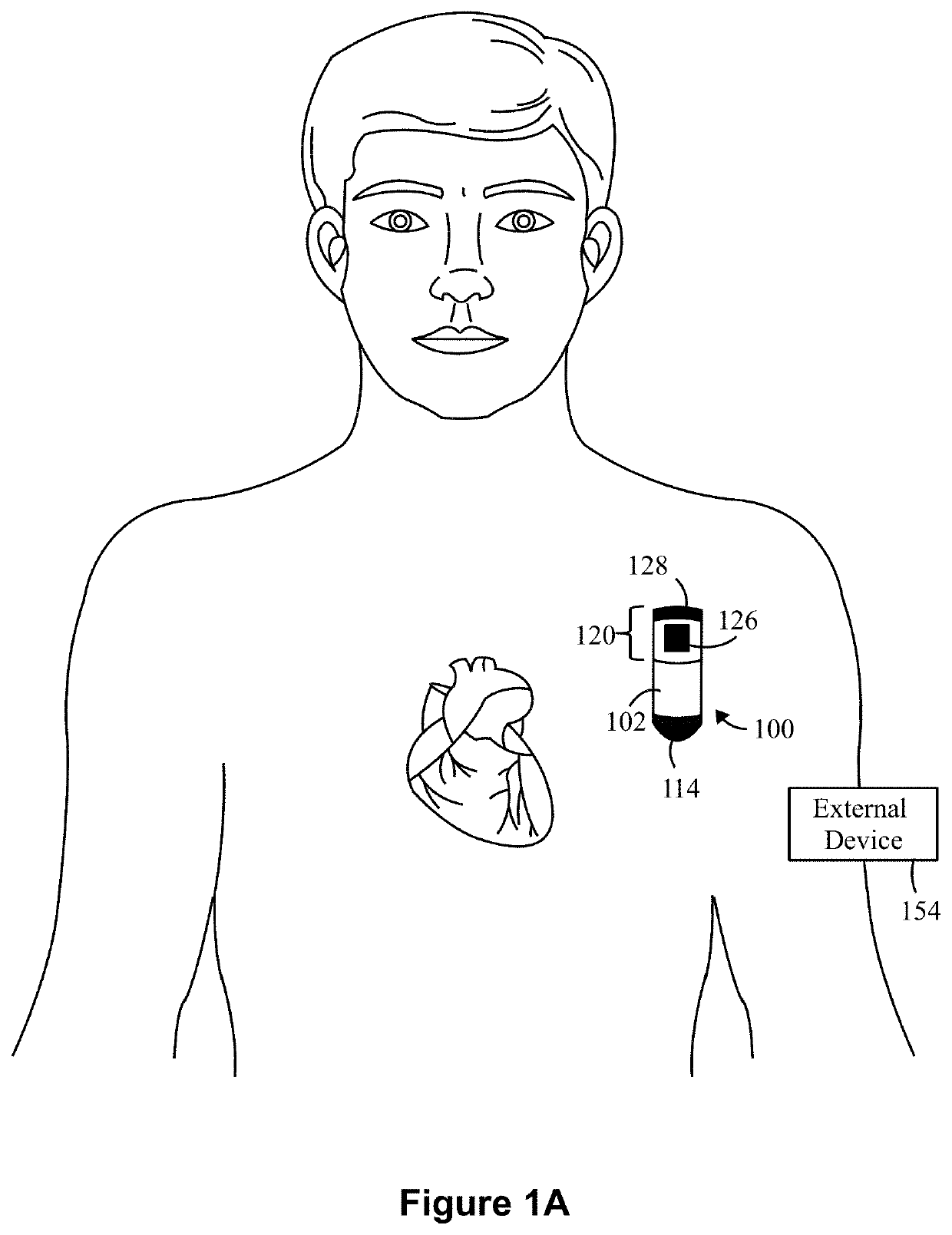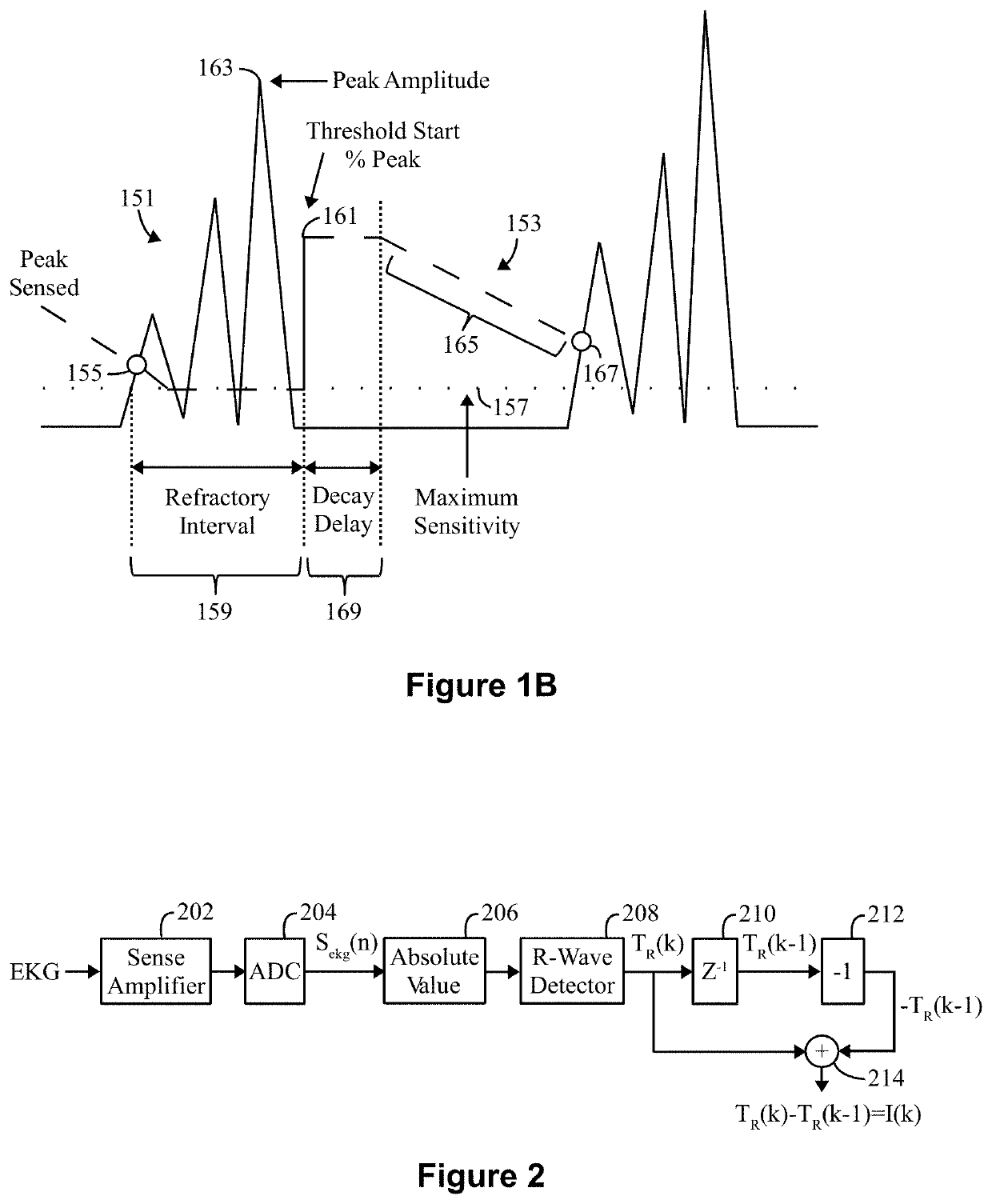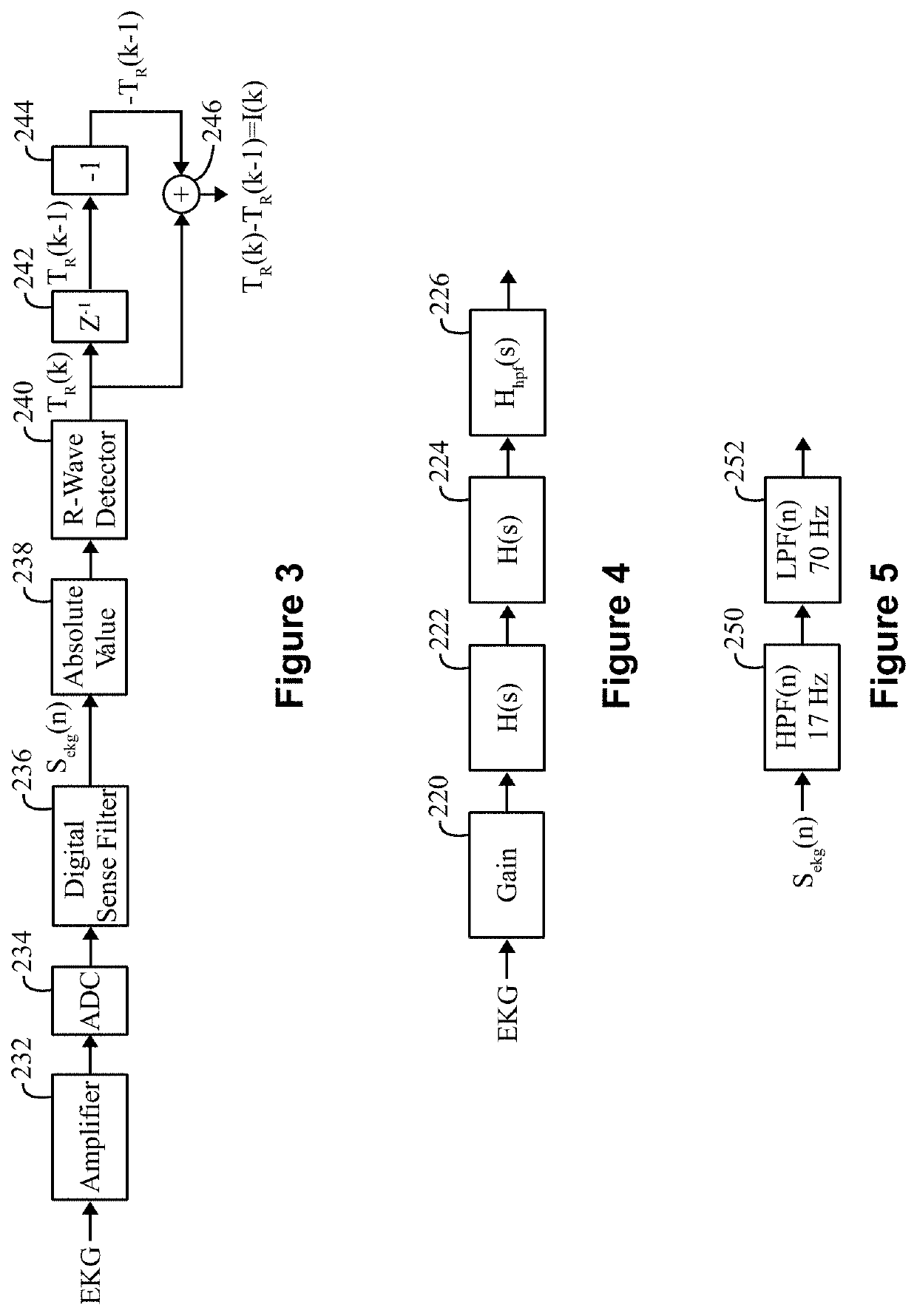Method and system to detect r-waves in cardiac activity signals
a cardiac activity and signal detection technology, applied in the field of implantable medical devices, can solve the problems of sudden changes in the amplitude of egm, limited impulsive propagation through the av node, and false positive af detections
- Summary
- Abstract
- Description
- Claims
- Application Information
AI Technical Summary
Benefits of technology
Problems solved by technology
Method used
Image
Examples
Embodiment Construction
[0040]The terms “cardiac activity signal”, “cardiac activity signals”, “CA signal” and “CA signals” (collectively “CA signals”) are used interchangeably throughout to refer to an analog or digital electrical signal recorded by two or more electrodes positioned subcutaneous or cutaneous, where the electrical signals are indicative of cardiac electrical activity. The cardiac activity may be normal / healthy or abnormal / arrhythmic. Non-limiting examples of CA signals include ECG signals collected by cutaneous electrodes, and EGM signals collected by subcutaneous electrodes.
[0041]The terms “beat” and “cardiac event” are used interchangeably and refer to both normal or abnormal events.
[0042]The terms “normal” and “sinus” are used to refer to events, features, and characteristics of, or appropriate to, a heart's healthy or normal functioning.
[0043]The terms “abnormal,” or “arrhythmic” are used to refer to events, features, and characteristics of, or appropriate to, an un-healthy or abnorma
PUM
 Login to view more
Login to view more Abstract
Description
Claims
Application Information
 Login to view more
Login to view more - R&D Engineer
- R&D Manager
- IP Professional
- Industry Leading Data Capabilities
- Powerful AI technology
- Patent DNA Extraction
Browse by: Latest US Patents, China's latest patents, Technical Efficacy Thesaurus, Application Domain, Technology Topic.
© 2024 PatSnap. All rights reserved.Legal|Privacy policy|Modern Slavery Act Transparency Statement|Sitemap



